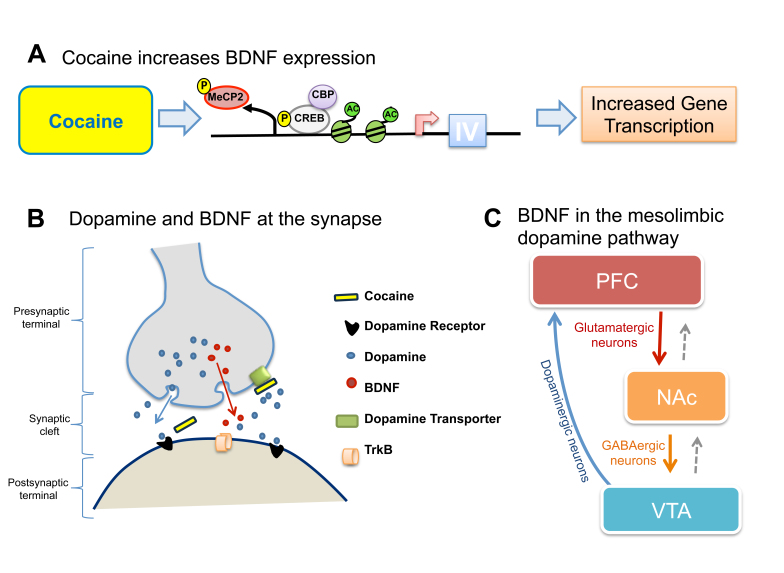Figure 1.
Cocaine-induced alterations in BDNF expression within the mesolimbic dopamine pathway. A. Cocaine-induced activation of gene expression at the promoter region of BDNF exon IV is facilitated by phosphorylation of CREB and association of phosphorylated CREB with CREB-binding protein. Subsequently, phosphorylated MeCP2 is dissociated from methylated DNA and histones become acetylated, resulting in transcriptionally active chromatin (modified from [79]). B. Simplified example of cocaine-induced changes in BDNF and dopamine at the synapse. Cocaine binds to the dopamine transporter of the presynaptic terminal of dopaminergic neurons, blocking reuptake of dopamine and an increased concentration of the neurotransmitter in the synaptic cleft. Increased BDNF release from dopaminergic neurons of the VTA has been associated with enhanced drug seeking. C. Repeated exposure to cocaine leads to increased BDNF expression in the mesolimbic pathway. BDNF is released from the dopaminergic neurons of the VTA (blue), glutamatergic neurons of the PFC (red) and GABAergic neurons of the NAc (orange). Colored lines represent anterograde transport from a specific cell type and dotted grey lines represent retrograde transport of BDNF (modified from [46]).

